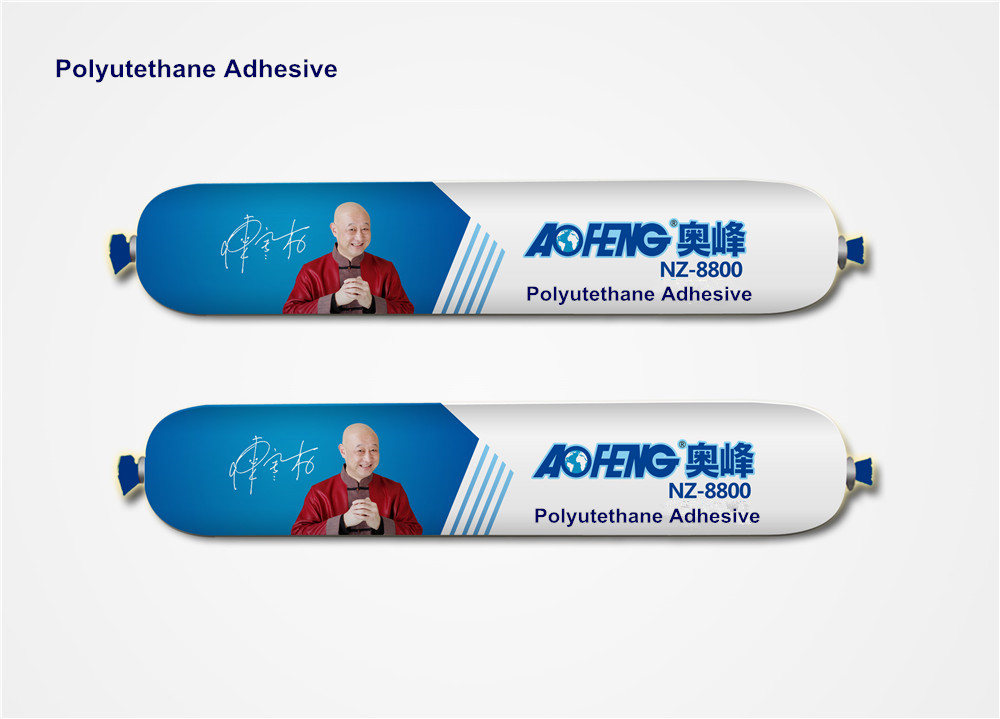Aofeng Single Component, Polyurethane
Sealant

Product Description
Aofeng Polyurethane Sealant is a high performance, single component, moisture curing, polyurethane sealant
ideally suited for a number of construction applications.
Used to Seal
? Vertical and horizontal expansion joints
? Concrete control joints
? Precast and tilt-up construction
? Masonry expansion joints
? Aluminum curtain walls and storefronts
? Doors and windows
? Submerged applications
Advantages
? Faster curing than most competitive products
? Tack-free in 60 minutes per ASTM C679
? Joint movement capability ±25%
? No priming required for most applications
? Excellent weather resistance
? Non-staining
? No mixing required
? Low VOC – 35.1 g/l
? Paintable after Tack-free
? Low modulus/Low shore A hardness
Colors
Only black currently.
Packaging
Sausage packs only.
Technical Data
|
Properties
|
Item No. of PU adhesive sealant
|
|
QAS
|
QCS
|
JCS-B
|
JCS-G
|
JCS-W
|
JCS-C
|
|
Appearance
|
Bright
black uniform paste
|
Matt
black uniform paste
|
Bright
black uniform paste
|
Grey
uniform paste
|
White
uniform paste
|
Light
yellow transparent uniform paste
|
|
Density @ 23℃,
g/cm3
|
1.22±0.02
|
1.47±0.02
|
1.45±0.02
|
1.35±0.02
|
1.35±0.02
|
1.20±0.02
|
|
Denseness, mm
|
7.7±0.1
|
5.7±0.1
|
8.3±0.1
|
8.0±0.1
|
8.0±0.1
|
8.0±0.1
|
|
Hardness Shore A
|
47±1
|
85±1
|
68±1
|
60±1
|
60±1
|
38±1
|
|
Extrusion rate, g/min
|
≥200
|
50±2
|
≥200
|
≥200
|
≥200
|
≥200
|
|
Sag rate, @ 23℃,
mm
|
0-1.0
|
0
|
0-1.0
|
0-1.0
|
0-1.0
|
0
|
|
Tack-free time @ 23℃, 50%, min
|
30
|
30
|
30
|
30
|
30
|
30
|
|
Curing rate, mm/24h
|
3.0-4.0
|
3.0-4.0
|
3.0-4.0
|
3.0-4.0
|
3.0-4.0
|
3.0-4.0
|
|
Peel adhesion,Cohesion destruction, %
|
70
|
70
|
70
|
90
|
90
|
90
|
|
Elongation to break @ 23℃, 50%rlf, 24h, 2mm), %
|
900±50
|
700±30
|
700±30
|
350±30
|
350±30
|
350±30
|
|
Tensile stength @23℃, 50%rlf, 24h, 2mm, Mpa
|
4.8±0.2
|
3.3±0.2
|
3.0±0.2
|
3.0±0.2
|
3.0±0.2
|
3.0±0.2
|
|
Tear strength @ 23℃,
50%rlf, 24h, 2mm, Kn/m
|
20±1
|
20±1
|
20±1
|
10±1
|
10±1
|
10±1
|
Storage
Polyurethane sealants and adhesive sealants must be stored in a controlled
environment to maximize shelf life. Store the products in the original unopened
containers below 77°F (25C).
Shelf Life
When stored at recommended conditions, the shelf life is 6 months after shipment
from AOFENG.
Directions for Use
Surface Preparation:
Surfaces to be sealed or bonded should be clean and dry. Surfaces should be free from grease, mold
release, oil, water/condensation, frost, and other contaminants that may affect the adhesion of the
sealant.
Primer:
For most applications, high strength bonds can be achieved without the use of a primer. Pre-testing
for adhesion is suggested to determine if a primer is needed.
Application:
Loading the applicator gun: make sure the applicator is set up with correct plunger attachment for
cartridge or sausage pack.
1. Cartridge: Puncture seal in nozzle and remove the pull-tab seal at the bottom of the cartridge.
Load into applicator and fix retaining ring (if applicable). Assemble the nozzle (if applicable) and
cut to desired size and shape.
2. Sausage Pack: Make a 1" slit close to the crimp on one end of the sausage pack. Load the sausage
pack into the applicator barrel (slit side out). Place the rounded end of the supplied sausage nozzle
onto the slit end of the sausage package and fix with retaining ring. Cut nozzle to desired size and
shape. Product should be used within 24 hours after seal is punctured. Dispense product with the
nozzle tip in contact with the substrate to insure good gap filling. Bonding must occur within the
first 50% of published skin time.
Do not apply polyurethane sealants and adhesive sealants on frozen nor wet surfaces. Do not apply
over silicone nor in the presence of curing silicone nor hybrid products. Avoid contact with alcohol
and solvents during curing. Sealant can be tooled immediately after applying to give desired
appearance.
Cleanup: While sealant is still soft, cleaning can be done with the same solvents used for surface
preparation. Avoid cleaning with alcohol as it will interfere with the curing process. If sealant is
already cured, removal is done mechanically with razor knife, piano wire, sanding, etc.

